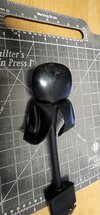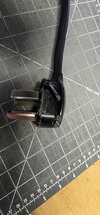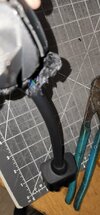I may be asking a question that has been asked already, but my searches have been unsuccessful.
I have an available TT-30 receptacle that I would like to use on occasion to charge my Tesla Model Y. I mistakenly bought the Nema 10-30 adapter from Tesla. I now know the difference.....I work in the electrical/electronics field, and am confident in my ability to figure this out, I am just having a hard time finding any sort of information or wiring diagrams on the adapter. Soooo.....my questions are:
Could I cut off the 10-30 connector and replace it with a TT-30 connector? I have seen the Tesla adapters for sale without the connector, but they are sold out......are all the 24A versions the same just wired to a different connector?
I guess I really need to know which wire goes to which pin on a TT-30 connector. Anybody have any experience with something like this?
I have an available TT-30 receptacle that I would like to use on occasion to charge my Tesla Model Y. I mistakenly bought the Nema 10-30 adapter from Tesla. I now know the difference.....I work in the electrical/electronics field, and am confident in my ability to figure this out, I am just having a hard time finding any sort of information or wiring diagrams on the adapter. Soooo.....my questions are:
Could I cut off the 10-30 connector and replace it with a TT-30 connector? I have seen the Tesla adapters for sale without the connector, but they are sold out......are all the 24A versions the same just wired to a different connector?
I guess I really need to know which wire goes to which pin on a TT-30 connector. Anybody have any experience with something like this?





